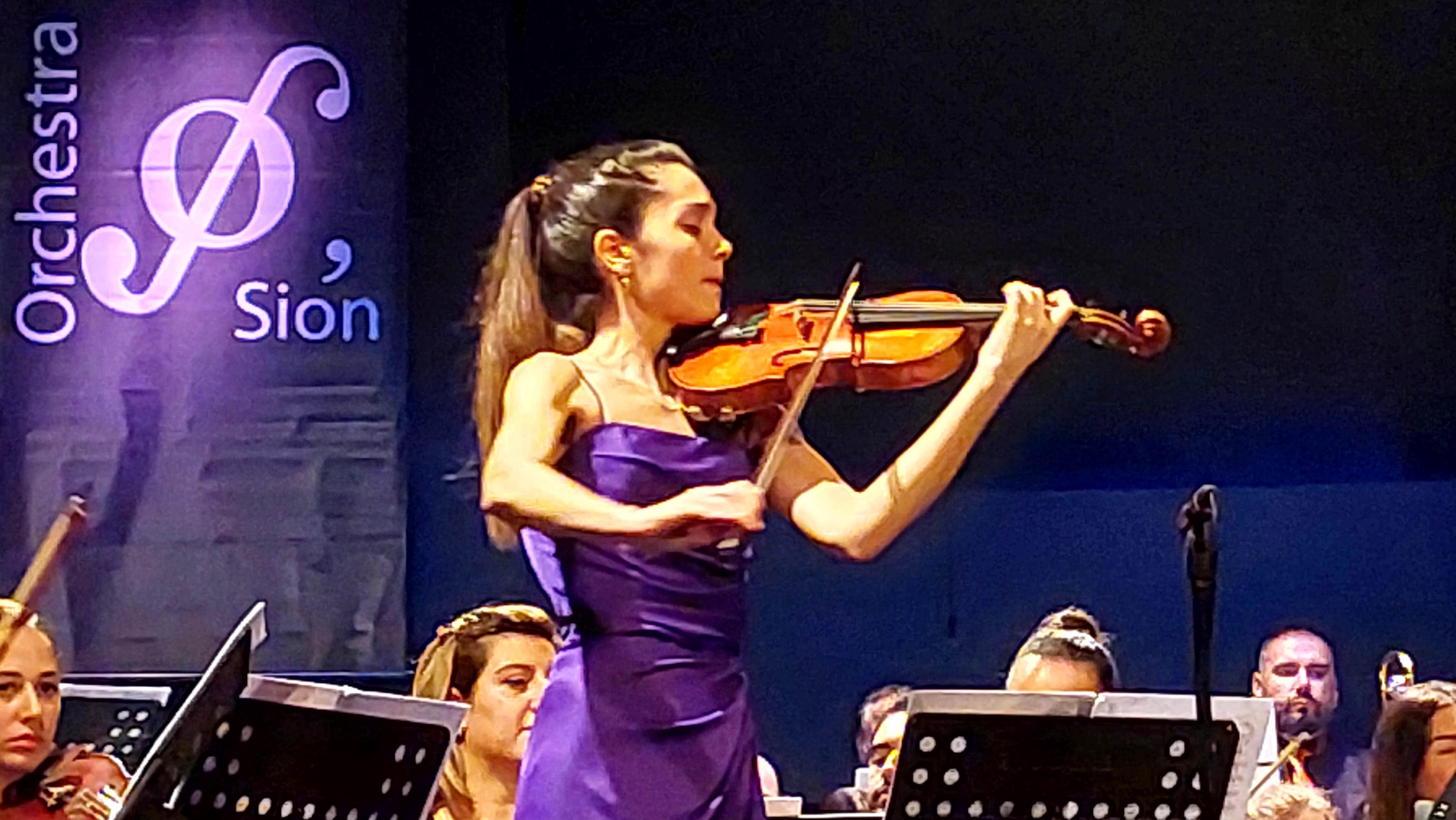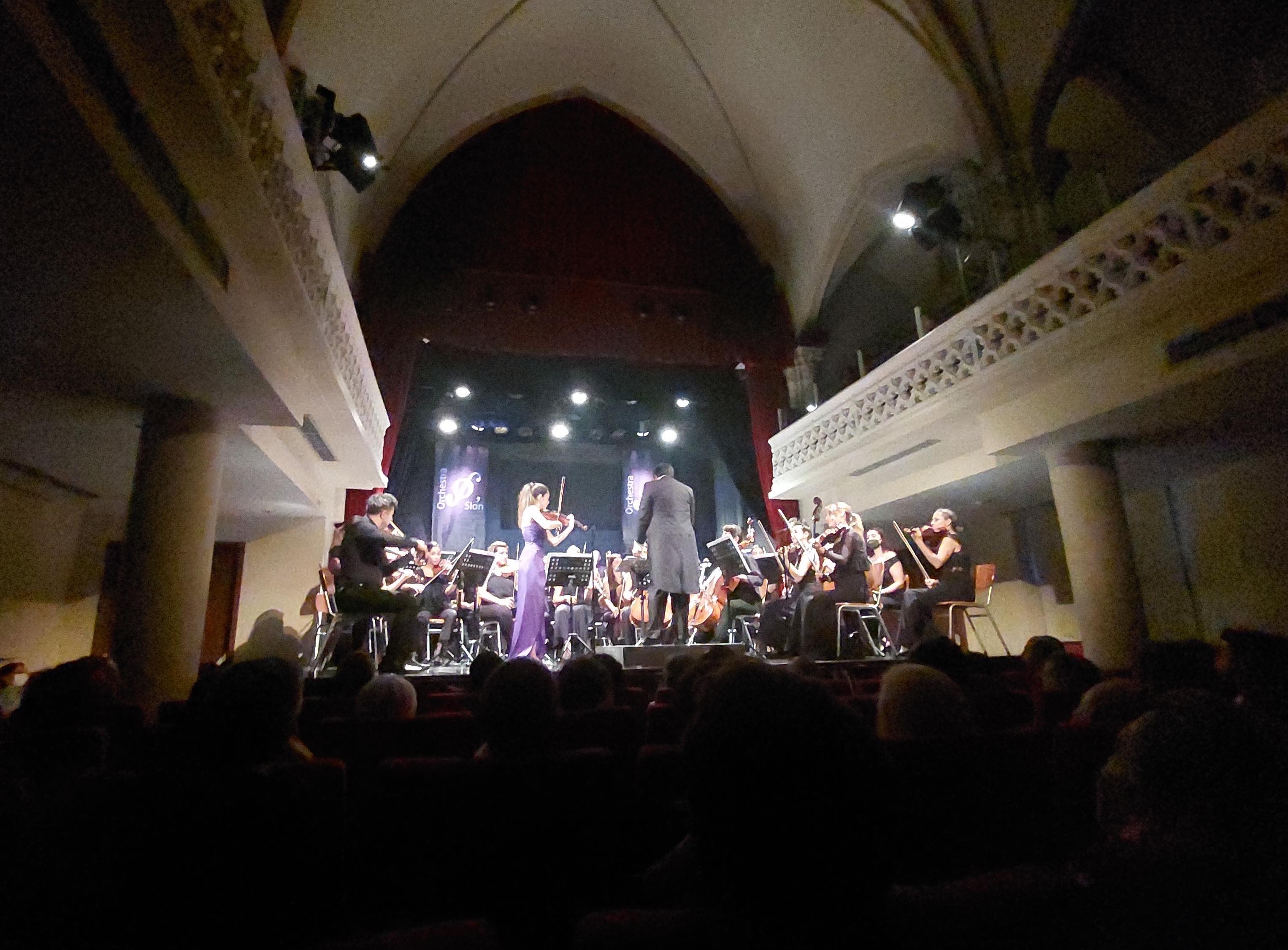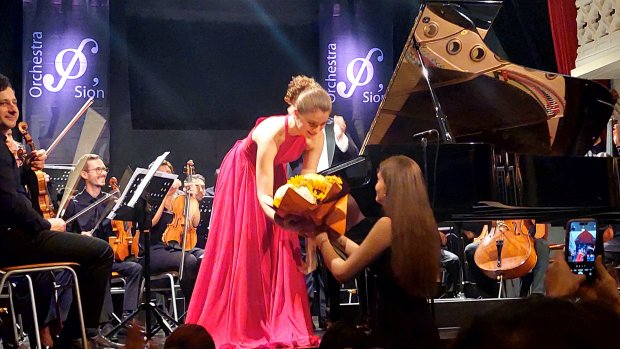A large number of concerts of both Turkish and Western classical music were organised in Istanbul to celebrate the 100th anniversary of the inauguration of the Republic of Turkey. Bearing in mind the Republican régime’s emphasis on the provision of education for girls, out of all the available possibilities I chose to attend a concert that was to take place in a girls’ school.
Accordingly, on October 26 I went to the Notre Dame de Sion French Lycée in Harbiye, where a celebratory concert, attended by the Sub-Provincial Governor of the Şişli district, was to be held. First, we observed a minute’s silence while a recording of the Last Post was played to commemorate Atatürk and his comrades-in-arms. Then we all sang the Turkish national anthem.
After welcoming speeches in which we were informed that one of the works that were about to be played – Beethoven’s Symphony No 3, the ‘Eroica’ – might have been dedicated to Atatürk had Beethoven lived into the 20th century, the ‘Notre Dame de Sion Orchestra’ took the stage. I was surprised to see that the musicians were not, as I had expected, pupils and former pupils of the school, but older men and women. Indeed, when they began to play the first bars of Mozart’s Piano Concerto No 21 in A major, K467, it became clear that the standard of performance was going to be very far from amateurish. In fact, I later found out from Ms Mireille Sadège, the school’s Responsable de communication, Relations presse, that many of the musicians in this outfit are also members of the Borusan Istanbul Philharmonic Orchestra.
Naz Tanka, the soloist in the Mozart concerto (of which only the first movement was played), is a former pupil of Notre Dame de Sion who is currently receiving tuition in Brussels from Mme Eliane Reyes, Professor of Piano at both the Royal Conservatory of Brussels and the Paris Conservatoire. Ms Tanka’s playing (initially, at least) was confident, and her co-ordination with the orchestra excellent throughout. On occasions later on in the piece she succumbed to nerves, and not all her arpeggios were executed with total accuracy. I expect, however, that with further experience on the concert platform she will learn to relax. Her technique is certainly adequate for the task, and will no doubt become even better as a result of the tuition she is receiving.

The second item on the programme was Saint-Saëns’ Violin Concerto No 3 in B minor. Here, the solo violin part was played by Ada Enön, also a former pupil of the school. Ms Enön began taking lessons in her chosen instrument (at the State Conservatoire attached to Mersin University) at the age of 7; later, after coming to Istanbul for her lycée education, she continued her training at the Mimar Sinan University State Conservatoire. Currently based in Paris, she is studying at the Musicology Department of the Sorbonne and the Paris Regional Conservatoire. An experienced performer (as was obvious from her gutsy rendition of the opening solo), she played the concerto with great panache. I was pleased to see that her intonation, even in the high register, was spot on.
One feature of this concert that I found especially enjoyable was the skill displayed by the orchestra in accompanying the two soloists. I will single out the woodwind and brass departments for special praise: they performed with consummate professionalism. Indeed, by the last movement of the violin concerto the whole orchestra had melded together, and was playing with both accuracy and verve. Mr Orçun Orçunsel, their conductor (who is also a pianist of note), must have been justifiably proud of them.

The Beethoven symphony in the second half suffered, I have to say, from the acoustics imposed by the dimensions of the concert hall. Owing to the smallness of the stage and its proximity to the audience, the timpani came across with intrusive loudness. To tell the truth, the building was just not designed to allow Beethoven to resound as Beethoven should. So my advice to future programme-planners would be to avoid symphonies that were designed to be played in much more expansive spaces. Both the Saint-Saëns concerto and the Beethoven symphony call for quite a large number of instruments, especially in the brass department, and as a result the number of players on the stage was rather larger than it could comfortably hold. Conductor Mr Orçunsel therefore did well to maintain his control despite the unusual circumstances.
That being said, I enjoyed the Notre Dame de Sion Orchestra’s performance of the ‘Eroica’ Symphony. I very much appreciated the horn fanfares in the third movement, which were delivered with gusto. In the fourth movement, meanwhile, it was the cellos who shone, producing a fulsome sound. There had been some shakiness in the orchestra’s co-ordination at the beginning of the slow movement (always a danger area, this), so I was especially gratified to see them cope with the changes of tempo in the finale without a hitch.
After the concert, my companion and I spent some time in the school’s courtyard, a most interesting collection of fine buildings that on this occasion was illuminated by a nearly-full moon. It certainly is a highly atmospheric place. This is not, however, the reason why I would encourage those readers who are able to do so to consider attending the concerts that are being organised this season at Notre Dame de Sion: the reason is, of course, the high standard of performance – something on which the school is to be heartily congratulated. Here is a link to their Etkinlik Ajandası (Programme of Events), which is in both French and Turkish.








